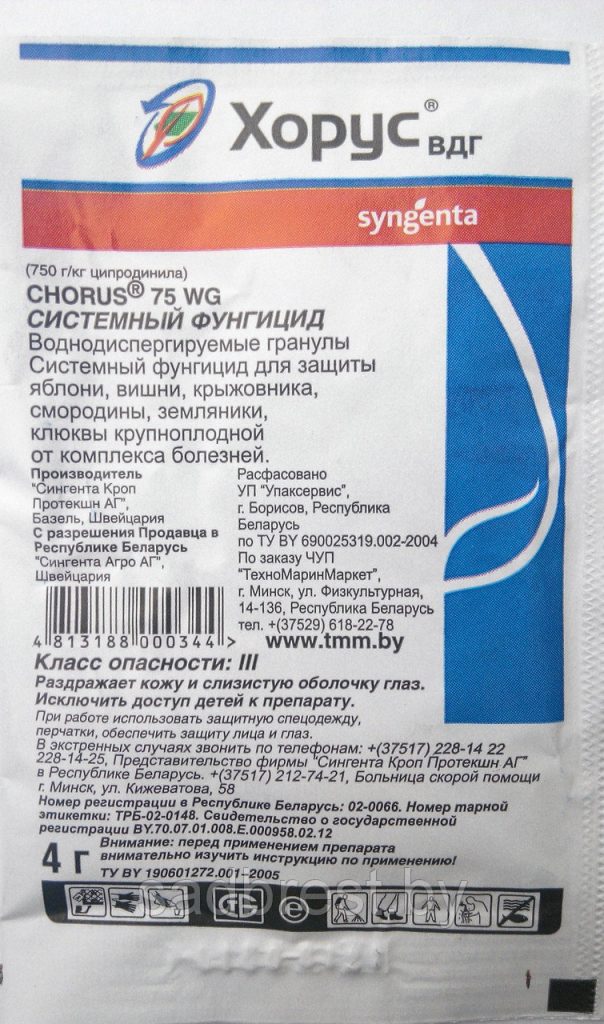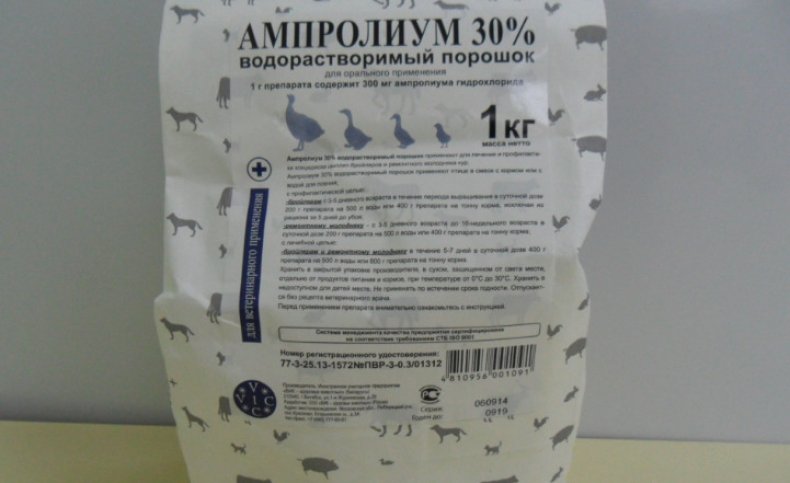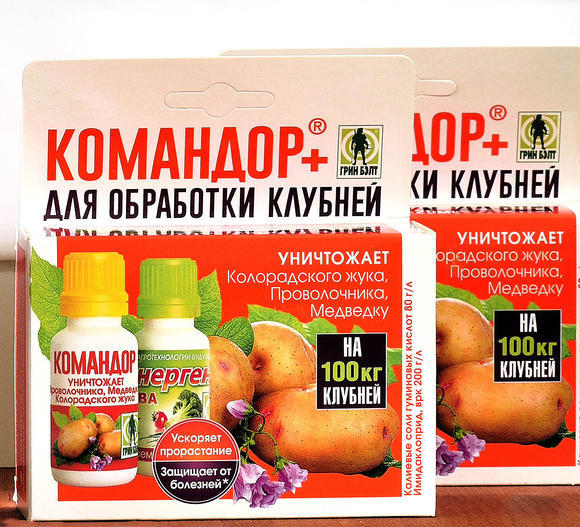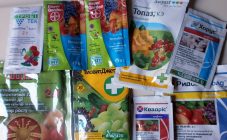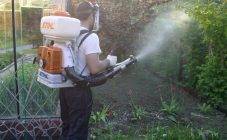Content:
Growing a culture like grapes is difficult enough, but the result of the effort will be delicious fruits. To obtain a harvest, it is important not only to comply with all the rules of agricultural technology, but also to timely use drugs that will help to cope with diseases, and sometimes act as preventive measures. Many people who practice viticulture use a chemical such as Horus.
Features of the drug
Horus is a fungicide that will deal with most fungal diseases. The drug is produced by the Swiss company Syngenta.
Horus itself is represented by small water-dispersed granules, which are packed in bags of various sizes. The most common packaging is 1, 3, 15 g and 1 kg.
By using the drug it will be possible to cope with any infectious load that is caused by various infectious and fungal diseases, in particular:
- scab;
- fruit and gray rot;
- curliness of leaves;
- alternaria;
- clasterosporium disease;
- mildew;
- monilial burn;
- oindium;
- true and downy mildew;
- brown and white spotting.
The substance, which is basic and active, is cyprodilin. Its content is very high - 75%.
Horus belongs to the group of very effective pesticides, because it has a destructive effect on almost all types of spores of fungal diseases. The parasites are completely destroyed and their life cycle ends.
Today, the cost of the drug varies from $ 80-130 per kg.
Mechanism of action
Fungicide Horus has a systemic effect on cultivated crops. It not only protects plantings from diseases, but also successfully treats the plant in the presence of infections. The effect of the drug is equally effective in any period of growth of grapes and other plants. Vineyards can be cultivated both in spring and summer. The first processing is allowed to be carried out immediately after spring frosts, when the air temperature becomes +3 ° C.
Advantages and disadvantages
In comparison with many other modern similar products, Horus has a number of advantages that the manufacturer identifies, and are confirmed by winegrowers who have tried the product in practice:
- has an excellent effect on the problem even at low temperatures;
- the active active ingredient is absorbed into the surface of the leaves for three hours;
- complex impact implies the simultaneous performance of three functions at once: protective, systemic and therapeutic and prophylactic;
- compatible with many other agricultural pesticides;
- efficiency in use;
- convenient form of release and packaging;
- the drug is characterized by a weak ability to move in soil layers, a low probability of damage to groundwater and its spread in them;
- it is not toxic, but it is better not to allow contact with the skin.
Like any chemical, Horus has its weaknesses, which are also important to note:
- a feature of the active component of cyprodinin is its local impact, it does not fully affect the bush, but only its specific parts;
- Young bushes should be treated with Horus during the growing season, since it cannot seep through the thick peel of the leaves of adult plants;
- if you miss the processing time, then the effect of the drug is reduced;
- the fungicide is also ineffective at temperatures below +3 and above 25.
Application features
Horus is used to treat many plant species. Horus is a fungicide, the instructions for use for grapes of which are not much different from other crops. Moreover, each plant has its own consumption rate of the working solution, as well as the number of preparation granules, for example: for grapes for 10 liters, 6 grams are taken, and for plums - 3 is enough.
Preparation of solution for processing
Horus for grapes, as well as for other shrubs and trees, is prepared just before use. The drug that remains must be removed. It is not suitable for storage. First, the container where the solution will be prepared is filled with water by three quarters of its volume. Then Horus is added to the container, stirred and only then another quarter of water is poured.
On average, the consumption rate of the prepared solution for shrub and woody crops is one cubic meter per hectare.
When diluting a solution for processing fruit crops with seeds in fruits, including grapes, the following standards are used:
- for the treatment and prophylactic treatment of curly leaves, monilial burns, 2 gr are diluted per 10 liters. facilities;
- when processing trees and shrubs from fruit rot, clasterosporium, coccomycosis 2 gr. the drug is taken in 5 liters of water.
Instructions for use
Plants are treated with Horus by spraying. Processing should be carried out in 2 stages:
- First, the bushes must be processed even before flowering;
- The second treatment is carried out no earlier than 23 weeks after the first, but also no later than 2 weeks before harvest.
You should also adhere to the correct consumption rates when processing grapes. About 3 liters of working composition are consumed per plant.
Features of processing grape plantings
The use of fungicide for grapes will help get rid of diseases such as powdery mildew, gray rot, downy mildew, etc.
The instruction for the use of Horus for grapes consists in the correct choice of the volume of the active substance and the number of treatments. For the processing of grapes, more saturated solutions with a higher dosage of the active component should be prepared. For 5 liters of water, take 6 grams. facilities. The approximate consumption rate is 2 liters of solution per 100 sq. meters.
Vineyard processing is best done three times per season:
- With the formation of buds;
- During the formation of bunches;
- During the beginning of the ripening of the grapes.
Compatibility
When using the drug, everything that is written in the attached instructions and instructions for use should be strictly observed. It is forbidden to mix the product with unknown chemicals, since the reaction of the plant to such a composition is unpredictable.
But there are a number of systemic fungicides that can be used together to improve the effect. For example, mixtures of Horus and Skor or Topaz show good results.But here it is important to use the prepared solution immediately, since after two hours the effectiveness disappears.
Despite the fact that many are afraid to use chemicals to protect their plantings, sometimes such measures are simply necessary.
An excellent option to protect the planting of grapes from most fungal diseases would be the use of Horus fungicidal solution. The tool has a lot of advantages that distinguish it favorably from similar funds and, subject to safety rules, make it safe.
